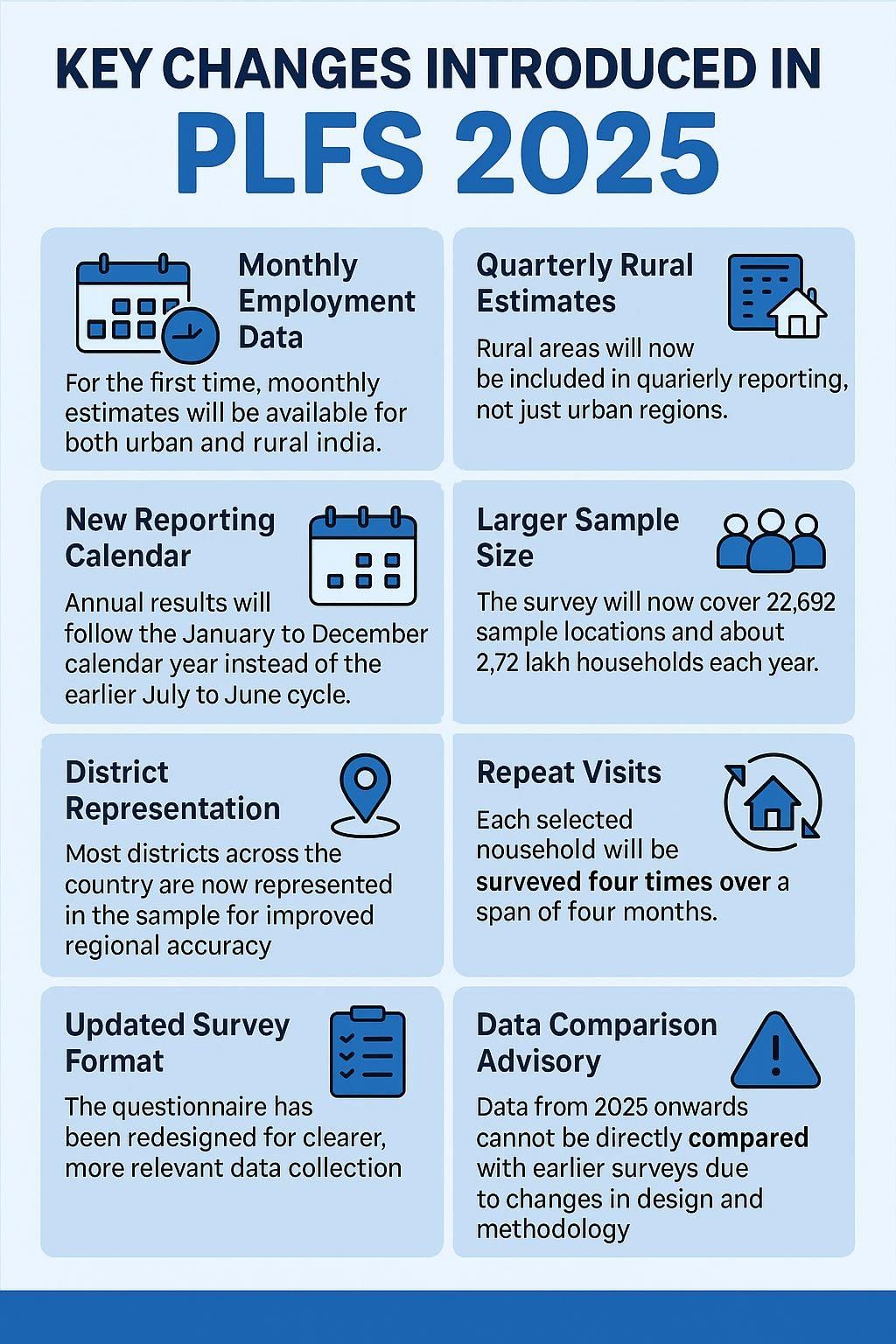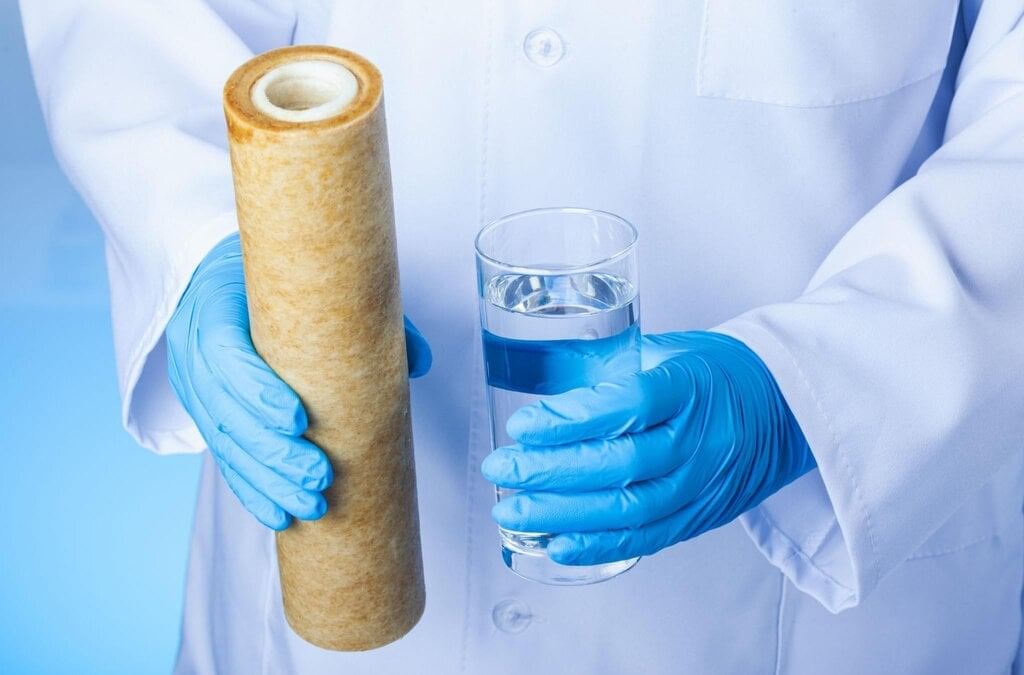UPSC Exam > UPSC Notes > PIB (Press Information Bureau) Summary > PIB Summary - 16th May, 2025
PIB Summary - 16th May, 2025 | PIB (Press Information Bureau) Summary - UPSC PDF Download
Periodic Labour Force Survey (PLFS) – Monthly Bulletin [April 2025]

Context
The Ministry of Statistics and Programme Implementation has released the first Monthly Bulletin for April 2025, based on the revamped Periodic Labour Force Survey (PLFS). This bulletin provides high-frequency estimates of important labour market indicators such as Labour Force Participation Rate (LFPR), Worker Population Ratio (WPR), and Unemployment Rate (UR) for individuals aged 15 years and above in both rural and urban areas.
Relevance
GS 3 ( Indian Economy )
Key Highlights
Labour Force Participation Rate ( LFPR )
- Overall: 55.6%
- Rural: 58.0%
- Urban: 50.7%
- Males:
- Rural: 79.0%
- Urban: 75.3%
- Females:
- Rural: 38.2%
- Urban: 25.7%
Worker Population Ratio ( WPR )
- Overall: 52.8%
- Rural: 55.4%
- Urban: 47.4%
- Female WPR:
- Rural: 36.8%
- Urban: 23.5%
Unemployment Rate ( UR )
- Overall: 5.1%
- Male: 5.2% Female: 5.0%
- Youth ( 15–29 yrs ): Higher unemployment at 13.8% overall
Structural & Methodological Changes ( From Jan 2025 )
Revamped Sample Design:
- Rotational Panel Scheme: Each household is surveyed 4 times over 4 months.
- FSUs ( Field Survey Units ) matched 75% between two consecutive months.
Sample Size ( April 2025 ):
- FSUs: 7,511 ( 4,140 rural + 3,371 urban )
- Households: 89,434
- Persons: 3,80,838
Improved Sampling Rigour:
- Households per FSU increased from 8 to 12.
- Revised stratification and selection methods for FSUs.
- Changes in the Schedule of Inquiry implemented.
Sectoral & Gender Insights
Youth Unemployment ( 15–29 yrs ):
- Rural: 12.3%
- Urban: 17.2%
Female UR ( Urban ):
- 23.7% — a concerning indicator of urban female joblessness.
Gender Gaps:
- LFPR: Urban Female: 25.7% | Rural Female: 38.2%
- WPR: Urban Female: 23.5% | Rural Female: 36.8%
- Overall female participation remains low across sectors.
Comparability Note
Data from January 2025 onward is not directly comparable with older PLFS due to:
- Revised sampling framework
- Rotational panel design
- Updated Schedule of Inquiry
Significance
- The first Monthly PLFS Bulletin ( April 2025 ) marks the beginning of high-frequency labour market data.
- It enhances the timeliness of labour statistics for policy interventions.
- The bulletin helps track seasonal and gendered employment trends.
DRDO develops high-pressure polymeric membrane for sea water desalination

Key Innovation
- The Defence Research and Development Organisation (DRDO) has created a homegrown nanoporous multilayered polymeric membrane intended for high-pressure seawater desalination.
- This membrane was developed by the Defence Materials and Stores Research and Development Establishment (DMSRDE) in Kanpur, a DRDO laboratory, specifically for use in Indian Coast Guard (ICG) ships.
Purpose and Utility
- The membrane is designed to tackle the stability issue caused by chloride ions in saline water, which is a significant challenge in marine environments.
- It meets the operational needs of ICG vessels, such as Offshore Patrolling Vessels (OPVs).
Testing and Trials
- Initial technical trials have been successfully carried out on an existing desalination plant aboard an ICG OPV.
- The safety and performance results of the membrane during these trials were found to be fully satisfactory.
- However, final operational clearance is pending after 500 hours of continuous operational testing.
Strategic Significance
- The development of this membrane was completed in an impressive time frame of 8 months, showcasing DRDO’s capability for agile innovation.
- This advancement will significantly boost self-reliance in crucial marine technology and is in line with the Aatmanirbhar Bharat initiative.
Civilian Potential
- With some modifications, the membrane has the potential for civilian application in coastal desalination plants.
- This could help address water scarcity issues in coastal and island regions.
Key Themes
- Indigenization of critical technology
- Strengthening maritime capabilities
- Public-sector research and development efficiency
- Dual-use technology for defence and civil sectors
- Fast-tracked innovation in response to strategic needs
The document PIB Summary - 16th May, 2025 | PIB (Press Information Bureau) Summary - UPSC is a part of the UPSC Course PIB (Press Information Bureau) Summary.
All you need of UPSC at this link: UPSC
FAQs on PIB Summary - 16th May, 2025 - PIB (Press Information Bureau) Summary - UPSC
| 1. What is the significance of the high-pressure polymeric membrane developed by DRDO for seawater desalination? |  |
Ans. The high-pressure polymeric membrane developed by DRDO is significant because it offers an efficient solution for desalinating seawater, making it suitable for providing potable water in water-scarce regions. This technology can enhance water security and support efforts to combat freshwater shortages, especially in coastal areas.
| 2. How does the high-pressure polymeric membrane work in the desalination process? |  |
Ans. The high-pressure polymeric membrane works by allowing water molecules to pass through while blocking larger salt ions and impurities. This process, known as reverse osmosis, effectively separates salt and contaminants from seawater, producing clean, drinkable water.
| 3. What are the potential applications of the high-pressure polymeric membrane in India and beyond? |  |
Ans. The potential applications of the high-pressure polymeric membrane include its use in municipal water supply systems, agricultural irrigation, and industrial processes that require freshwater. Additionally, it can be utilized in remote areas and island communities where freshwater resources are limited.
| 4. What challenges does seawater desalination face, and how does this new membrane address them? |  |
Ans. Seawater desalination faces challenges such as high energy consumption, cost, and membrane fouling. The new high-pressure polymeric membrane aims to reduce energy requirements and improve resistance to fouling, making the process more efficient and cost-effective.
| 5. What role does DRDO play in addressing water scarcity issues through technological advancements? |  |
Ans. DRDO plays a crucial role in addressing water scarcity issues by developing innovative technologies like the high-pressure polymeric membrane for desalination. Their research and development efforts contribute to sustainable water management solutions that can enhance access to clean water, especially in regions facing severe water stress.
Related Searches
















